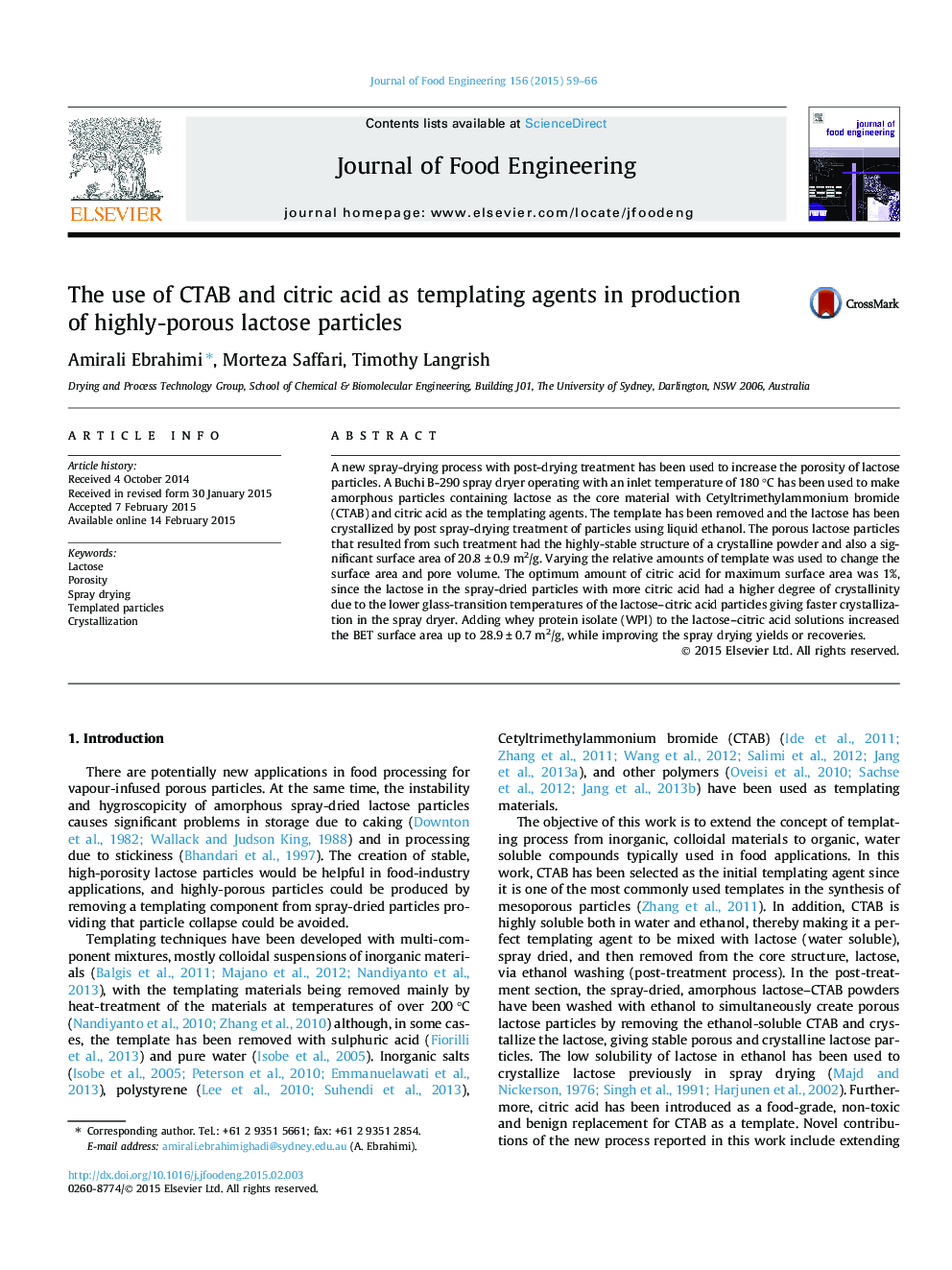| Article ID | Journal | Published Year | Pages | File Type |
|---|---|---|---|---|
| 6665470 | Journal of Food Engineering | 2015 | 8 Pages |
Abstract
A new spray-drying process with post-drying treatment has been used to increase the porosity of lactose particles. A Buchi B-290 spray dryer operating with an inlet temperature of 180 °C has been used to make amorphous particles containing lactose as the core material with Cetyltrimethylammonium bromide (CTAB) and citric acid as the templating agents. The template has been removed and the lactose has been crystallized by post spray-drying treatment of particles using liquid ethanol. The porous lactose particles that resulted from such treatment had the highly-stable structure of a crystalline powder and also a significant surface area of 20.8 ± 0.9 m2/g. Varying the relative amounts of template was used to change the surface area and pore volume. The optimum amount of citric acid for maximum surface area was 1%, since the lactose in the spray-dried particles with more citric acid had a higher degree of crystallinity due to the lower glass-transition temperatures of the lactose-citric acid particles giving faster crystallization in the spray dryer. Adding whey protein isolate (WPI) to the lactose-citric acid solutions increased the BET surface area up to 28.9 ± 0.7 m2/g, while improving the spray drying yields or recoveries.
Related Topics
Physical Sciences and Engineering
Chemical Engineering
Chemical Engineering (General)
Authors
Amirali Ebrahimi, Morteza Saffari, Timothy Langrish,
